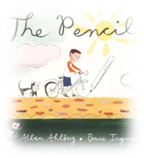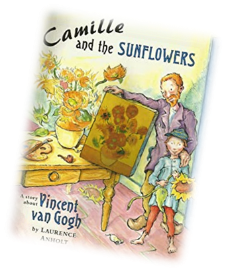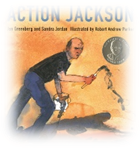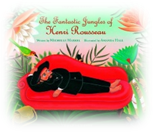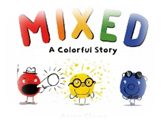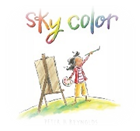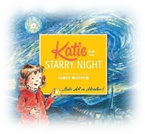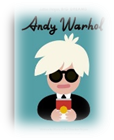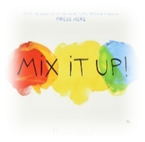Art at CKIS
Please follow the link on the left to see our Art learning this term.
Please see the bottom of this page for our detailed curriculum sequence for Art.
Our vision for Art at CKIS
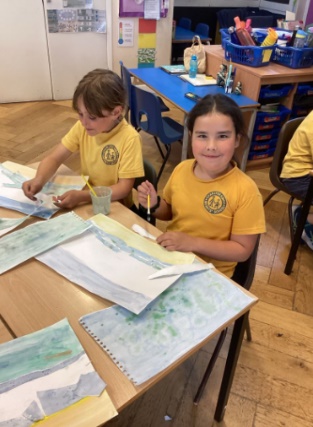
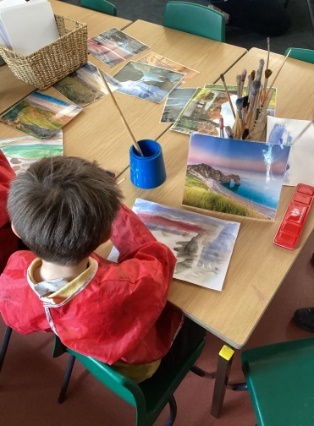
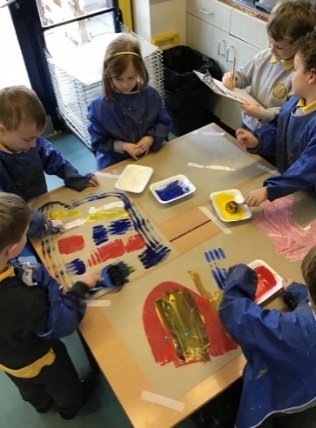
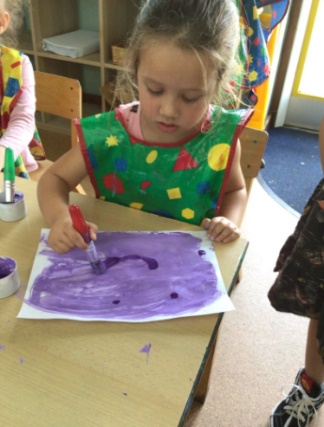
“At CKIS we want to engage, inspire and challenge pupils, equipping them with the knowledge and skills to experiment, invent and create their own works of art, craft and design. We want our children to have the opportunity to take inspiration from great artists, from different cultures and periods of time, and generate their own ideas with curiosity and independence.”
Purpose and aims of Art (Intent statement)
Our curriculum provides a broad range of experiences for our pupils: Our pupils’ backgrounds, our culture and our climate for learning provide the following drivers that underpin ALL areas of our art curriculum:
- Learning to learn - which helps pupils to concentrate and focus and build resilience as learners
Artistic knowledge and skills are often used as a mindfulness strategy and is something children can learn to use independently, to support them in self-regulating. Development of mark making will also support their writing and drawing, which can be used in all areas of the curriculum. Art can challenge children’s resilience, which is a skill to develop in all areas of learning.
- Culture and Diversity - which helps pupils to develop enquiring minds about the wider world
Artists from different countries, genders and periods of time are focused on within art and are used to inspire children’s own work. Artists range from Emily Kame Kngwarreye, who was a black Australian artist, to Henri Rousseau, who was French artist.
- Environment and Community - which helps to instil in our pupils a respect for our environment and for our local and wider communities
Children are taught how to use different materials without creating waste and damaging the environment. They also use recycled materials within their artwork and are encouraged to reuse.
– Creative arts and physical development - which helps our pupils to express themselves and excel as holistic learners
Our art curriculum encourages children to express themselves in art. They can take ideas from artists and each other to produce work in their own style. The children are encouraged to work on a large and small scale, which will develop both their gross and fine motor skills. When creating a piece of work on a large scale, the children are able to work as part of a team and use the outdoor environment.
We offer a thoughtful range of experiences that support our culture: pupils enjoy a ‘full spectrum’ of academic, physical, spiritual, moral, social, cultural activities that enrich their lives. We aim to ensure that all children have the confidence and skills to develop as resilient life-long learners.
Our curriculum has been developed over time through:
- Analysing the strengths and weakness of our previous curriculum
- Considering how the National Curriculum aims and the Early Years Goals are being met across the school
- Being active participants in the CLP Subject Leader Network meetings
- Accessing subject specific CPD and using this to inform our curriculum design
We aim for all pupils to:
- Gain an understanding of the art subject knowledge (see termly schemes of work) so that they develop conceptual understanding and the ability to recall and apply knowledge accurately
- Understand the subject specific vocabulary and use it independently within their learning
- Develop their artistic skills, such as sketching, colour mixing and printing, allowing them to use them independently in the provision (Challenge Time)
- Be inspired by a range of artists and begin to understand how to create work using their techniques and style
- Have the knowledge, skills and confidence to express their creativity
The teaching of Art at CKIS (Implementation)
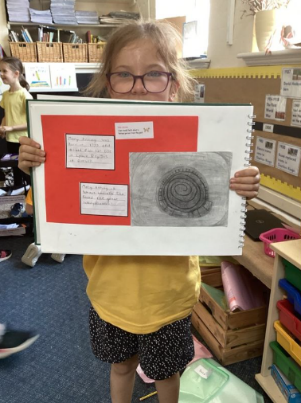
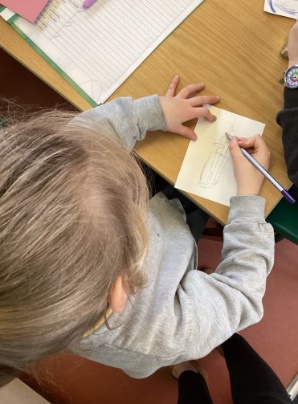
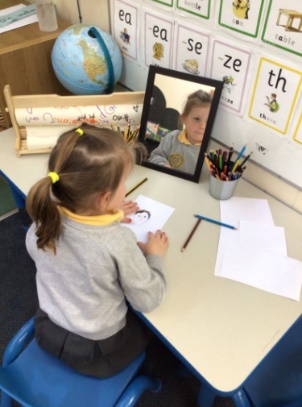
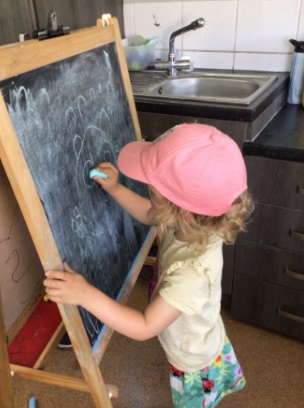
The art curriculum is carefully and coherently sequenced to enable our children to develop growing knowledge and skills.
The Schemes of Work outline the specific knowledge that we expect our children to know and understand by the end of each term in every year group. The key learning directly matches the National Curriculum and the Early Years Framework, and additional learning that we believe is essential for our children to know.
The Learning Leaves are used to share what we will be learning about with the parents in each term. As well as stating the key knowledge we will be teaching the children, the Learning Leaves also features key vocabulary and definitions, as well as further learning opportunities.
With the support of the subject leads, the year group teams create medium term plans from the schemes of work. Staff build upon the prior learning when putting together lesson by lesson plans, with each unit starting with a ‘lesson 0’ to elicit and assess prior knowledge. The medium term plans are working documents that are adapted to cater to individual and cohort needs.
At CKIS every child is recognised as a unique individual. We celebrate and welcome differences within our diverse school community, encouraging all to grow and flourish. Learning is centred around experiencing the joy of discovery.
The ability to learn is underpinned by the teaching of basic skills, knowledge, concepts and values, with a vision to prepare our children to be life-long learners, rooted in our school motto: The wings to fly, the confidence to try.
Art in our Foundation Stage is covered in the ‘Expressive Arts and Design’ area of the EYFS Curriculum. It is introduced indirectly through activities that encourage every child to explore different mediums and their creativity. In Reception, the children are taught the key knowledge during a whole class direct teach, either weekly or fortnightly. They have permanent access to their ‘art area’ and a range of resources, including paint, pencils, paper and craft materials to explore, create and apply their new knowledge and skills.
During their first years at school our children will develop their gross and fine motor skills, using different materials to create artwork on both a large scale and a small scale. The children begin by using a comfortable grip to mark make and build their skills to hold a pencil, paintbrush and other mediums correctly. They will begin to look at different pieces of artwork by great artists, such as Jackson Pollock, thinking about their style and the colours they use.
KS1 pupils should develop fundamental artistic skills and knowledge, and become increasingly independent in order to explore their creativity and apply their knowledge. They are taught new knowledge through a direct teach, either weekly or fortnightly and complete pieces of work to demonstrate their new knowledge and skills. These are the children’s ‘expected outcomes’.
During Challenge Time, all KS1 pupils can ‘be an artist’ and have permanent access to an art area within the classroom. The children are encouraged to independently use a range of resources, including sketching pencils, oil pastels and primary colour paints to revisit prior learning and build upon new knowledge. In the area the children also have access to the subject specific vocabulary and inspiration from the artists they have learnt about.
Throughout KS1, all children will develop their mark making skills in order to sketch and choose the correct grade of pencil. They will use their understanding of primary colours from the Foundation Stage to mix secondary colours, tertiary colours and create tints and shades. Children in KS1 will be exposed to a wider of range of artists and begin to discuss their artwork in further detail. They will begin to give an opinion on the artist’s working, thinking about whether they like or dislike the piece and why.
We ensure the children are ready for the KS2 curriculum by conducting regular meetings with the subject leaders at Charlton Kings Junior School. This ensures we have a clear understanding of the progression in art from KS1 to KS2.
Key vocabulary and texts for each year group
|
Year Group |
Texts |
Vocabulary |
|
|
Kindergarten |
|
Pencil Pen Paint Chalk Line Shape |
|
|
Reception |
|
Mark making Pencil grip Pencil Chalk Paintbrush Plan Primary colour Printing Pattern Same Different |
Paint Ideas Feelings Experiment Stamp Palette Portrait Self-portrait Repeating pattern Observational drawing |
|
Year 1 |
|
Secondary colour Sketch Printing Mood Opinion Shape |
Mark making Pattern Repeating pattern Because Landscape Seascape |
|
Year 2 |
|
Tertiary colours Shade Tint Printing Tools Materials Landscape Seascape Opinion Mixed media |
Abstract art Grades of pencil Charcoal Textiles Collage Pop Art Sculpture Clay Slip |
Demonstrating learning
In art, pupils demonstrate their learning in the following ways:
The pupils demonstrate their understanding through enrichment tasks in the continuous provision. These are observed and could be recorded using Seesaw, examples of children's work in their special books and through cross curricular evidence.
Teachers carefully plan and monitor progress and adapt medium term plans to include key questions and checkpoints for children to demonstrate understanding in age-appropriate ways.
Examples from Seesaw:
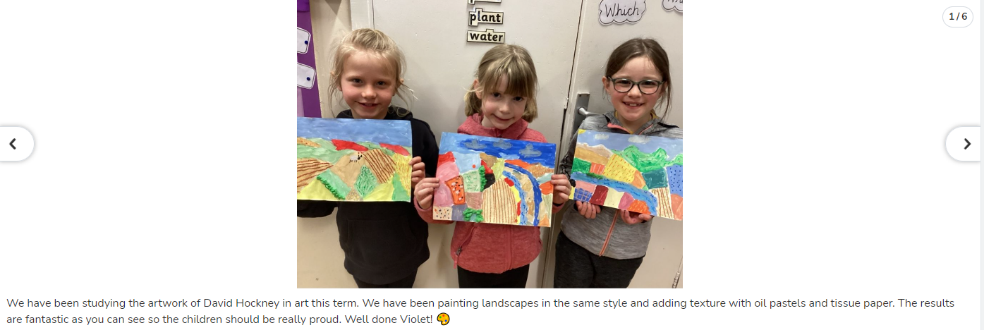 The children’s learning can be recorded on Seesaw and shared with parents. This gives families the opportunity to continue learning at home and further develop their knowledge and skills.
The children’s learning can be recorded on Seesaw and shared with parents. This gives families the opportunity to continue learning at home and further develop their knowledge and skills.
Special books:
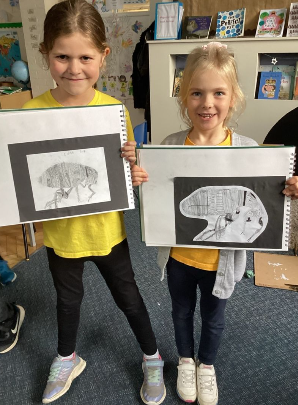
The children keep their ‘gold standard’ work in their special books. This can be the ‘expected outcomes’ they have completed or examples of where they have independently furthered their learning in the provision.
Meeting the needs of all pupils (inclusion)
Our school supports the principle that young children learn through play, and through well planned structured opportunities that are relevant, engaging and promote deep level thinking and learning.
Teaching through both a rich continuous provision, paired work, small group and whole class learning opportunities skilfully builds upon the experiences of the child and promotes their next steps as a learner.
Teachers and Teaching Partners competently provide a balance of structured cross curricula learning activities and child-initiated opportunities through high quality indoor and outdoor learning environments.
In this way we aim to ensure that children are actively involved in their learning and deepen their knowledge, skills and understanding becoming masters of their learning as:
• Problem solvers
• Resilient learners
• Collaborative thinkers
• Inspired questioners
All pupils are entitled to a broad and balanced curriculum that meets their needs.
Art is taught in class groups, and accessible in our provision with all pupils included.
All our teachers know the pupils in their class and their differing needs well. They plan and adapt lessons to help all pupils know and remember more so they make very good progress.
Some pupils, including those with special educational needs or disabilities, or those with English an as additional language, may need extra support to access, understand and remember key concepts.
For these pupils, teachers use a range of effective strategies, whilst promoting independent learning as far as possible. These may include:
● adapting and scaffolding pupil activities and resources
● focussed additional support from an adult in class
● extra pre learning or overlearning of key knowledge before or after the lesson
Some pupils very quickly grasp the main concepts being taught and are able to think more deeply to extend their learning. To ensure they reach their full potential, teachers may:
● set more complex activities that require thinking at greater depth
● ask pupils to apply their knowledge to a different situation
● go further by asking them to explain their thinking to others
Assessment (Impact)
Formative Assessment
At CKIS teachers constantly assess how far their pupils understand key concepts throughout lessons, mainly through questioning and observation. Quizzes and other games are regularly used to assess how far pupils have remembered learning from the lessons before. Teachers then adapt their teaching to ensure misconceptions or gaps in knowledge are addressed. In addition, they may need to introduce opportunities for more challenge or deeper thinking. Regular reviews of the medium term plans take place to ensure that they are setting the correct level of challenge and opportunities for our children.
End of unit Assessment
Key assessment criteria are written into our school curriculum and medium-term plans.
Assessments of children's learning are made and assessed through observations and classwork and shared as evidence on SeeSaw. These assessments contribute to a summative judgement at the end of each term against the art statements supplied by the art lead and found on INSIGHT.
Teachers and subject leads monitor children’s progress and attainment throughout the year to inform ongoing teaching and learning.
This is carried out through book looks, observations and using the data on INSIGHT. Teachers and subject leads ensure that they assess a balance of the disciplinary and substantive knowledge, outlined in each term’s Schemes of Work.
Reporting to families and statutory assessment
The children’s progress across the curriculum is shared with families during parents evening appointments and their learning is shared through observations on Seesaw throughout the year. At the end of every year, families receive a report which comments on the children’s strengths across the curriculum and areas for improvement. The teachers make judgements for each child’s attainment and progress in every subject, which is included in the report.
Monitoring and Evaluation
The subject leader for art monitors the quality of education regularly in accordance with the school’s monitoring timetable. This may take the form of:
● learning walks and drop ins, usually with a member of the senior leadership team, and sometimes with a governor.
● book looks. The subject leader looks at a range of books or other evidence across the school, sometimes with senior leaders or an adviser or governor.
● scrutiny of planning, particularly to evaluate coverage and progression within the curriculum as well as the extent to which planning is catering for the range of needs of pupils.
● pupil conferencing.
● surveys for pupils and/ or staff.
● lesson observations.
Subject leaders have regular support from the senior leadership team where aspects of the subject policy and action plan are monitored and discussed. Action plans are reviewed and shared with the staff three times a year to ensure all staff are aware of key actions.
Resulting actions may emerge with additional leadership support, resources or policy changes implemented.
Subject leaders routinely have a teacher appraisal objective linked to an aspect of their subject leadership. Following all these activities, strengths and areas for development are reported and discussed with staff. Resulting actions are recorded on the subject action plan and reported to governors.
At the end of each year the action plan for art is fully evaluated. In addition, the subject leader evaluates how far art is meeting our curriculum intent statement. This evaluation feeds into the action plan for the following year. Evaluated action plans and evaluations are reported to the senior leadership team and governors.
The role of the governors
Every subject has a specific governor allocated to it. This governor evaluates the activities within this aspect and the impact on the quality of education and pupil outcomes.
They meet with subject leaders and review aspects of the subject, including seeing lessons in practice and talking to children.
Their findings are reported to the Governing Board. In this way, leaders are held accountable for the aspects they are responsible for, and subject leaders are able to access the appropriate support and resources to achieve their aims.

